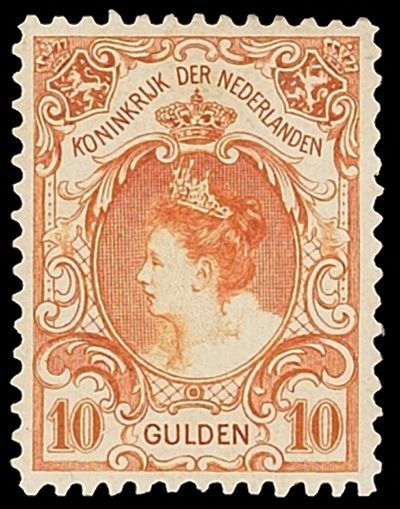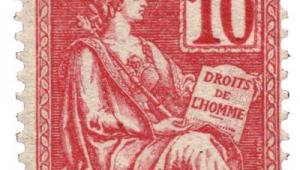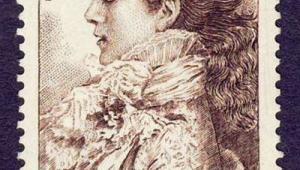The Netherlands: The furry Queen

When a new series of definitives was needed by the Netherlands on the accession of Queen Wilhelmina in 1898, no Dutch artist managed to come up with a satisfactory portrait for the medium values. So the French stamp designer Louis Mouchon, who had already done a lot of work for the printers, Enschedé, was invited to take up the challenge.
Partly as a result of this decision, the issue went far from smoothly. But it would remain in use for a quarter of a century, establishing itself as one of the most popular Dutch series ever.
A frame had already been designed, by D Knuttel, so Enschedé asked Mouchon specifically for a portrait. Mouchon, however, could not resist ‘sexing up’ the frame as well, leaving Knuttel none too pleased.
Even so, the portrait did not fit the frame, causing another delay in a design process which was running seriously behind schedule.
A whole set of stamps was supposed to have been issued on September 7, 1898, the day of the young Queen’s inauguration, but most of them were not ready. As a result, a recess-printed 1g high value, designed by Professor R Stang with a frame by J Vürtheim, was released on its own, becoming known as the Coronation issue.
Mouchon’s typographed medium values, from 3c up to 60c did not begin to appear until August 1899, along with a reworked 1g and Stang’s higher values up to 5g (there were also low values from ½c to 2½c, but these did not have the Queen’s head).
With new stamps added over the years, the ‘Bontkraagjes’ (Fur Collar) series ultimately included 20 different values. Many of these came with perforation varieties, while a handful featured colour changes necessitated by postal rate fluctuations.
The 5c rose-red, which prepaid the inland postcard rate for 20 years, is one of the most used stamps in Dutch history, with nearly two billion copies printed.
Through it all, Mouchon’s portrait was the cause of ongoing problems for the printers. Its reproduction on postal stationery yielded such poor results that Enschedé had to start fiddling with it almost immediately, eventually removing every other line of shading from the background and portrait.
When, later, the composition of its grey ink was altered, yielding a very blotchy print, the 10c sheet stamp underwent a similar treatment.
The lifetime of the set coincided with the postal department making a financial loss for the first time, and consequently adopting a policy of cashing in on philatelic demand.

The 10g orange-red is one of the most sought-after stamps in Dutch philately
In 1905 a 10g value was added, which was an astronomically high amount at the time. From 1919 many stamps were overprinted, often with postal rates that were not current.
When the 5c and 10c were issued imperforate in 1923, this was ostensibly due to a strike at Enschedé, prompting the authorities to allow unperforated sheets to be distributed to post offices in case stocks ran low.
In fact, though, the strike had already ended by the time stocks did run low, rendering a provisional issue unnecessary; the issue of imperforates was approved because the authorities smelt a nice little earner!
It was later in 1923 that forgeries of the 10c began to surface in Amsterdam, persuading the postal authorities to withdraw the whole set immediately. A new definitive set was in preparation anyway, and the Silver Jubilee commemoratives could serve as a stopgap.















